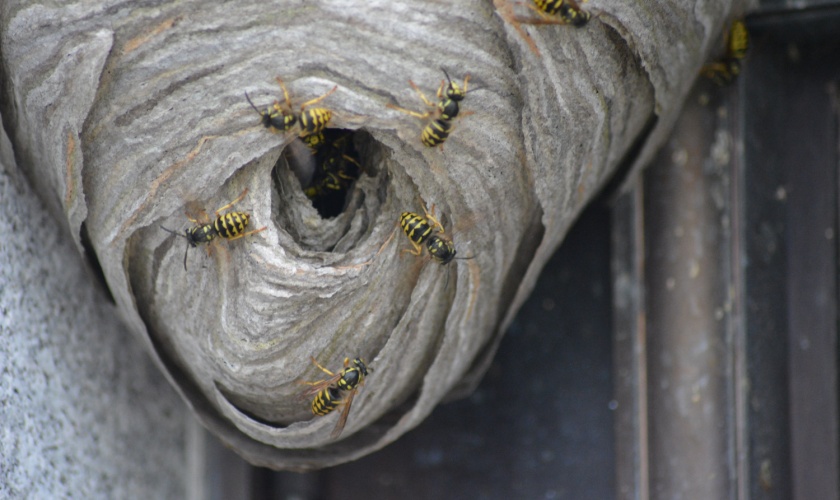Yellow jackets are aggressive wasps that become particularly problematic during late summer and early fall in San Jose. Unlike honeybees, which generally only sting defensively, yellow jackets can be territorial and may sting repeatedly without provocation when they feel their nest is threatened. Understanding where these pests typically build their nests around San Jose properties is the first step in effective management.
Common Yellow Jacket Nesting Sites Around San Jose Homes
Underground Nests
The Western yellow jacket (Vespula pensylvanica), one of the most common species in San Jose, primarily builds nests underground. These subterranean nests are typically found in:
- Abandoned rodent burrows
- Voids beneath landscape pavers and stepping stones
- Areas along fence lines with loose soil
- Lawn areas, particularly in dry or thin spots
- Bases of trees and shrubs where soil is looser
Underground nests can be particularly dangerous because they’re often discovered accidentally when mowing or gardening, leading to multiple stings when the colony is disturbed.
Structure Voids
Yellow jackets readily adapt to human environments by building nests in structural voids around San Jose homes:
- Inside wall cavities accessed through small cracks or gaps
- Under eaves and inside attic spaces
- Inside hollow fence posts and deck railings
- Between layers of stacked materials like firewood or lumber
- Inside electrical boxes and meter housings
- Behind siding and under window frames
The worker yellow jackets will create a small, distinctive entrance hole and you’ll notice steady traffic in and out when the nest is active.
Above-Ground Open Nests
While less common in San Jose, some yellow jacket species will build exposed, paper-like nests in:
- Low-hanging branches of trees and large shrubs
- Under deck joists and porch ceilings
- Inside dense vegetation like juniper bushes
- On play equipment and outdoor furniture that’s rarely used
- Inside barbecue grills and equipment covers
These nests are typically football-shaped and grow larger throughout the season as the colony expands.
Warning Signs of Yellow Jacket Nests
Being able to identify potential yellow jacket activity before encountering a nest can help prevent painful stings:
- Consistent yellow jacket traffic in a specific area
- Worker yellow jackets disappearing into small holes in the ground or structures
- A sudden increase in yellow jackets around outdoor dining areas
- Yellow jackets gathering around garden beds hunting for caterpillars and other prey
- A faint buzzing sound coming from inside walls or underground
What to Do If You Find a Yellow Jacket Nest
Yellow jacket colonies can contain thousands of aggressive insects by late summer, making them dangerous to approach. Follow these guidelines:
DO NOT:
- Attempt to block the entrance or seal yellow jackets inside a structure
- Try to flood underground nests with water
- Use store-bought wasp sprays on large established nests
- Hit or jar the nest or surrounding area
- Stand directly in front of the nest entrance
DO:
- Keep children and pets away from the area
- Mark the location from a safe distance
- Contact professional pest control services with experience in yellow jacket removal
Professional Yellow Jacket Control
At Citra Pest Control, we specialize in safely eliminating yellow jacket nests from San Jose properties. Our trained technicians use specialized equipment and treatments designed specifically for yellow jacket colonies. We can:
- Precisely locate hidden nests that might not be visible
- Apply treatments that reach deep into structural voids
- Safely remove nests without causing yellow jackets to relocate elsewhere on your property
- Provide recommendations to prevent future nesting
Yellow jackets are an important part of our ecosystem as predators of other insects, but when they establish nests too close to human activity areas, professional removal is often the safest option for both humans and pets.

